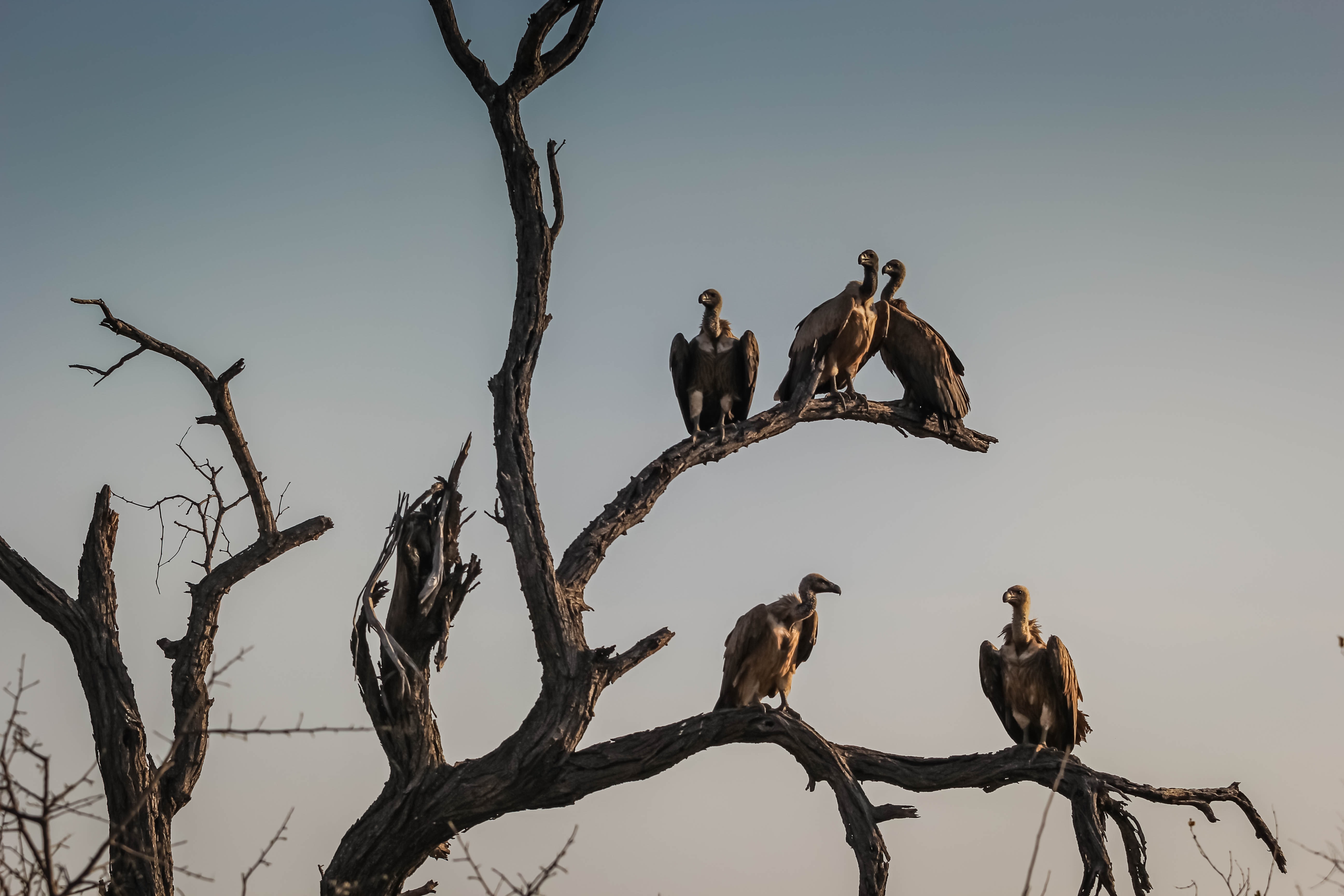GARDEN ROUTE | KAROO NEWS - Africa is home to nine vulture species. Once widespread on the continent, vulture numbers have decreased in recent decades, resulting in “an African Vulture Crisis”. The White-headed vulture, Hooded vulture and Cape vulture are species found only in Africa.
Vultures play an important role in the environment. Through their highly-efficient disposal of organic waste, they are indispensable for cycling nutrients through the environment. They are the scavengers of nature and they feed in large numbers.
If vultures were to be removed from the ecosystem, carcasses will remain exposed to the environment for weeks, allowing bacteria and disease to spread amongst wildlife and livestock.
The decline in vultures also threatens human health. Vultures provide a free waste management service. In countries where people live close to nature, livestock and wildlife, disease management is essential and also costly.
Vulture poisoning is not uncommon in Africa, where they are targeted by poachers because they draw unwanted attention to their illegal activities. The birds' heads are also used in traditional medicine, according to wildlife groups.
Other reasons include habitat loss, electrocution and collision with a rapidly growing power grid infrastructure and ingestion of lead ammunition from feeding on animals killed by hunters.
The first concern about these poisonings is of course the extinction of vultures. Seven of these species are listed in the Red Data Book of Birds of South Africa, Lesotho and Swaziland as facing a certain degree of threat of extinction.
In August of 2022, vulture poisoning once again made headlines in South Africa. More than 100 vultures in the Kruger National Park died after feeding off a buffalo carcass laced with poison, according to Endangered Wildlife Trust (EWT).
EWT stated that 104 critically endangered White-backed vultures were among the species poisoned. Others include one critically endangered White-headed vulture, two vulnerable Cape vultures and one endangered Lappet-faced vulture. The event has led to the loss of 5% of the region's vultures.
Across the Indian subcontinent, the Gyps vulture population decline was initially thought to be caused by unintentional NSAID (non-steroidal anti-inflammatory drug) diclofenac poisoning, but several other NSAIDs have been identified as toxic to vultures.
Worldwide, a search has been initiated to find other vulture-safe drugs to reduce the use of these toxic NSAIDS, which have resulted in a decline in vulture numbers worldwide.
One NSAID, meloxicam, was found to be safe at concentrations likely to be encountered by vultures in the wild. In a new study (Experimental safety testing shows that the NSAID tolfenamic acid is not toxic to Gyps vultures in India at concentrations likely to be encountered in cattle carcasses, authored by S. Chandramohan et al.), the NSAID tolfenamic acid proved not toxic when exposed to Gyps vultures.
In this study the authors reported on safety testing experiments on the NSAID tolfenamic acid on captive vultures of three Gyps species, all of which are susceptible to diclofenac poisoning.
The process included the following steps:
- Firstly, they estimated the maximum level of exposure (MLE) of wild vultures and gave this dose to 40 near threatened Himalayan Griffons (G. himalayensis) by oral gavage, with 15 control birds dosed with benzyl alcohol (the preservative used in the injectable solution of tolfenamic acid).
Results obtained, showed that two birds given tolfenamic acid died with elevated uric acid levels and severe visceral gout, while the remaining 38 showed no adverse clinical or biochemical signs.
- Secondly, four G. himalayensis were fed tissues from water buffaloes which had been treated with double the recommended veterinary dose of tolfenamic acid prior to death and compared to two birds fed uncontaminated tissue
Results obtained here showed that none of the birds suffered any clinical effects.
- Finally, two captive critically endangered vultures, one G. bengalensis and one G. indicus, were given the MLE dose of tolfenamic acid by gavage and compared to two control birds.
Results obtained showed that no bird suffered any clinical effects.
At the end of the study, the authors determined that the death of two G. himalayensis in the first study mentioned, may have been an anomaly due to:
- the high dose level used and
- the high ambient temperature at the time of the experiment.
The conclusion is that tolfenamic acid is likely to be safe to Gyps vultures at concentrations encountered by wild birds and could therefore be promoted as a safe alternative to toxic NSAIDs.
Join Afrivet in saving vultures in South Africa and the rest of the world. Although not everyone works in the wildlife industry, we all can do our part. For more information or to ask questions on tolfenamic acid, please contact Afrivet‘s General Manager, Dr Peter Oberem, on peter.oberem@afrivet.co.za.
 The decline in vultures also threatens human health.
The decline in vultures also threatens human health.
'We bring you the latest Garden Route, Hessequa, Karoo news'
















